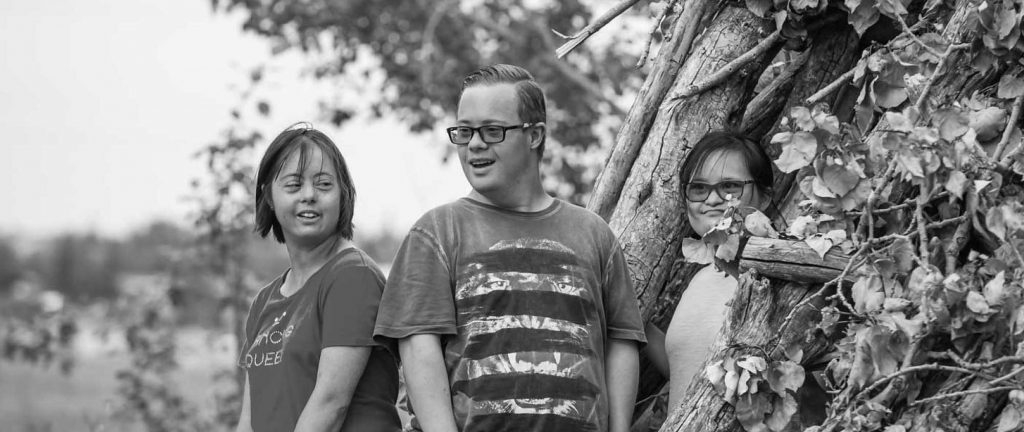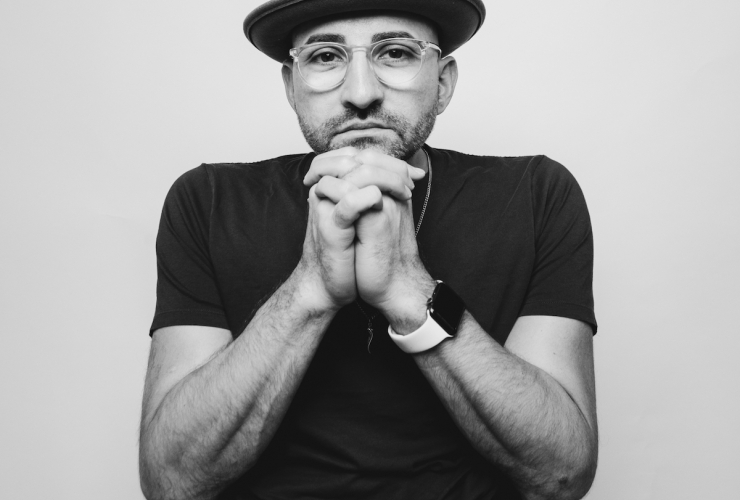Bolder, faster, together poses the question: How can we all take responsibility for the past, navigate a turbulent present and co-operate to protect future generations? Follow along as this series, co-ordinated by the Transition Innovation Group at Community Foundations of Canada, explores the deep societal transformation already underway and accelerating in Canada and around the world.
In Canada, more than one in five people live with a disability. While almost everyone knows someone impacted, most people aren’t aware that government support doesn't scratch the surface when it comes to covering even the most basic needs. Canadians with disabilities are more than twice as likely to live in poverty than the rest of the population.
People with disabilities have higher costs of living because they face costs other Canadians have never had to consider. There’s a misconception that things like accessible home adaptations and essential mobility aids are covered by public programs. Yet coverage across a patchwork of federal, provincial and territorial funding is partial at best, forcing people living with disabilities to choose between buying food and accessing the internet or even fundraising to meet their basic needs.
In British Columbia, Madeline is literally fundraising to stay alive. Suffering from post-viral syndrome, her financial vulnerability is urgent and increases by the day. She writes: “In B.C., [disabled] people receive about $1,000 per month less than what a healthy person earning minimum wage makes in a 40-hour week.” After four decades navigating so-called “social assistance,” Madeline is exhausted and deeply in debt. When she runs out of money, she plans to access the only other public service available to her: medical assistance in dying.
Madeline’s dilemma is far from unique. According to Statistics Canada, more than a quarter of people with disabilities cannot afford required assistive devices and prescriptions. What would you do if you couldn’t afford medication to control your pain? Or if the wheelchair you needed to move independently broke down before your province’s rules allowed funding for a new one?
The Disability Without Poverty movement emerged during the pandemic to address these injustices. The organization brings together people from communities across Canada with a diversity of disabilities and other intersecting identities. The movement advocates for a Canada Disability Benefit that would enable each person with a disability to be prosperous, realize their power, pursue their passions and participate in every aspect of society. It’s a vision that requires not only a unified disability movement, but action from all Canadians to push for collaboration between all levels of government.
The 2020 throne speech proposed “a new Canadian Disability Benefit modelled after the Guaranteed Income Supplement for seniors.” This commitment was renewed in the 2021 budget and must not be forgotten amid recent concerns around inflation.
People living with disabilities were neglected long before the pandemic and continue to face barriers to full social and economic participation. COVID-19 only highlighted the ways that ableism operates in Canadian society and our economic system. Adults with disabilities languished in long-term care facilities and many remain without the support needed to live independently in the community. Children with disabilities struggled with inaccessible approaches to online learning and now face staffing shortages at schools. Workers with disabilities were stunned by the swift pivot to work from home after demanding similar flexibility from employers for decades.
The pandemic also prompted deeper consideration of the types of infrastructure required to support Canadians, and it isn’t just roads and railways. It’s systems of care that includes financial support. Who gets paid sick leave? Who loses income to take care of kids? Canada’s social infrastructure is evolving, but it’s still unequal.
In the early days of COVID, Ottawa moved quickly to support Canadians facing unemployment by introducing the Canadian Emergency Response Benefit (CERB). The same care and attention was not extended to people with disabilities, who had to wait months for a symbolic $600 that was only available to people who qualify for the narrowly scoped Disability Tax Credit. Even this gesture often did more harm than good.
The current system of income support for people with disabilities is designed around clawbacks. It’s a term that casts a long shadow in the disability community: essentially, if a person’s income or assets go up, then social assistance goes down. In Ontario, this meant that people receiving provincial disability support who were eligible for CERB lost $900 of every pandemic response payment.
The lack of co-ordination between federal and provincial programs adds insult to injury because, as Madeline’s experience shows, people receiving government assistance still live well below the poverty line. As a result, Disability Without Poverty argues for a national income supplement that would stack on top of existing benefits rather than compromising other forms of support.
It is time for Canada to shift from social assistance to social infrastructure. While current social assistance programs are fragmented, difficult to navigate and built around restrictions, social infrastructure focuses on dignity rather than diagnosis, capacity rather than clawbacks. Adequate income support will enable people living with disabilities to contribute to shared spaces and services for all Canadians.
Philanthropic organizations can amplify the message of Disability Without Poverty and strengthen the national campaign through research and resource sharing. For this reason, Disability Without Poverty has formed partnerships with non-profits and secured independent funding to consult with economists and inclusive design experts on equitable approaches to income support.
Charitable foundations cannot replace leadership by people with lived experience of disability, nor should private donations be required to meet the needs of people with disabilities. The fact that Canadians are donating to help cover people like Madeline’s monthly expenses shows the failure of Canada’s existing social infrastructure rather than the power of philanthropy.
Outdated understandings of philanthropy frame people with disabilities as objects of pity and passive recipients of funding. In contrast, Disability Without Poverty knows that people living with disabilities are natural collaborators and problem-solvers capable of creating systemic change.
Disability Without Poverty is reaching out to people across Canada and leading independent research in order to re-centre dignity and community care in Canada. The movement advocates that friends, family members, neighbours and strangers with disabilities should have the same opportunities for economic and social engagement in the capacity they desire.
To reach this goal, we need individuals and organizations to unite behind equitable income support and show that neither private donations nor existing public programs can guarantee the dignity of the 22 per cent of Canadians living with disabilities.
Of course.
Of course.
OF COURSE.
Private donations are charity, subject to the will and ability of the donor. Public services are a clear and demonstrable recognition of citizenship.
My only issue with this article is that that schism is by far not limited to those with disabilities. It covers every single social issue, every aspect of equality and equity. All aspects of poverty. Of mental illness. Of substance misuse. There's a long list.
Public services could, would, should, address all those chasms.
They would also address the stigma and discrimination associated with them.
Otherwise, we are left with what I began calling the Scrooge response a number of years ago. Scrooge intended it for the poor. We've expanded it far beyond that. "Let them die, and decrease the surplus population."







Comments